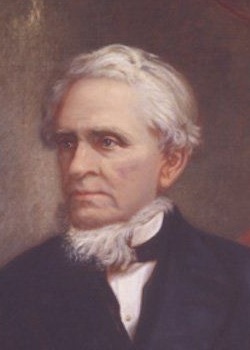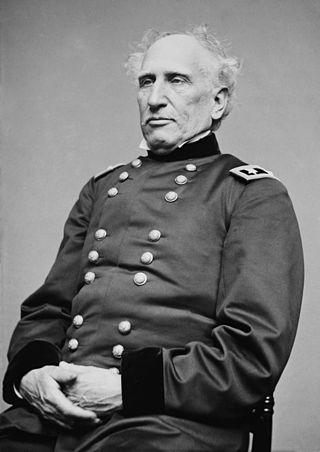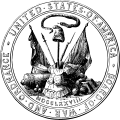A corps area was a geographically-based organizational structure of the United States Army used to accomplish administrative, training, and tactical tasks from 1920 to 1942. Each corps area included divisions of the Regular Army, Organized Reserve, and National Guard of the United States. Developed as a result of serious mobilization problems during World War I, this organization provided a framework to rapidly expand the Army in times of war or national emergency, such as the Great Depression.
Department is an organizational term used by the U.S. Army, mostly prior to World War I, to describe named geographical districts created for control and administration of installations and units. In 1920, most of the named departments were redesignated as numbered Corps Areas. However, the Hawaiian, Panama Canal, and Philippine Departments retained their old names. In 1939, the Puerto Rican Department was created and in May 1941 the Panama Canal and Puerto Rican Departments were combined as the Caribbean Defense Command, although each was still referred to as a department.

John Adams Dix was an American politician and military officer who was Secretary of the Treasury, Governor of New York and Union major general during the Civil War. He was notable for arresting the pro-Southern Maryland General Assembly, preventing that divided border state from seceding, and for arranging a system for prisoner exchange via the Dix–Hill Cartel, concluded in partnership with Confederate Major General Daniel Harvey Hill.

Edwin Vose Sumner was a career United States Army officer who became a Union Army general and the oldest field commander of any Army Corps on either side during the American Civil War. His nicknames "Bull" or "Bull Head" came both from his great booming voice and a legend that a musket ball once bounced off his head.

Joseph King Fenno Mansfield was a career United States Army officer and civil engineer. He served as a Union general in the American Civil War and was mortally wounded at the Battle of Antietam.

Silas Casey was a career United States Army officer who rose to the rank of major general during the American Civil War.
The Department of the Pacific or Pacific Department was a major command (Department) of the United States Army from 1853 to 1858. It replaced the Pacific Division, and was itself replaced by the Department of California and the Department of Oregon.
The Department of the Ohio was an administrative military district created by the United States War Department early in the American Civil War to administer the troops in the Northern states near the Ohio River.

George Leonard Andrews was an American professor, civil engineer, and soldier. He was a brigadier general in the Union Army during the American Civil War and was awarded the honorary grade of brevet major general.

James Adelbert Mulligan was colonel of the 23rd Illinois Volunteer Infantry Regiment in the Union Army during the American Civil War. On February 20, 1865, the United States Senate confirmed the posthumous appointment of Mulligan to the rank of brevet brigadier general of U.S. Volunteers to rank from July 23, 1864, the day before he was mortally wounded at the Second Battle of Kernstown, near Winchester, Virginia. He commanded the Federal forces at the First Battle of Lexington, and later distinguished himself in other engagements in the Eastern theater prior to his death in battle.

The Excelsior Brigade was a military unit in the Union Army during the American Civil War. Mainly composed of infantry regiments raised in the state of New York primarily by former U.S. Representative Daniel Sickles, the brigade served in several of the Army of the Potomac's most important battles in the Eastern Theater, including Chancellorsville and Gettysburg.

Thomas Henry Barry was a major general of the United States Army who served in many conflicts throughout his military career but is perhaps best known as being superintendent of the United States Military Academy from 1910 to 1912.

The Department of California was an administrative department of the United States Army. The Department was created in 1858, replacing the original Department of the Pacific, and it was ended by the reorganizations of the Henry L. Stimson Plan implemented in February 1913. As with the preceding organization, headquarters were in San Francisco. Its creation was authorized by General Orders, No. 10, of the War Department, Adjutant-General's Office, September 13, 1858.

The 103rd Aero Squadron was an aviation pursuit squadron of the U.S. Air Service that served in combat in France during World War I. Its original complement included pilots from the disbanded Lafayette Escadrille and Lafayette Flying Corps. One of those pilots, Paul F. Baer, became the first ace of an American unit in World War I.

The 24th Aero Squadron was a United States Army Air Service unit that fought on the Western Front during World War I.
The Philippine Department Air Force was a military formation of the United States Army Air Forces.
During the American Civil War, a department was a geographical command within the Union's military organization, usually reporting directly to the War Department. Many of the Union's departments were named after rivers or other bodies of water, such as the Department of the Potomac and the Department of the Tennessee. The geographical boundaries of such departments changed frequently, as did their names. As the armies became larger Departments began to be subordinated to Military Divisions, and the Departments were often sub divided into Districts and from 1862 Subdistricts. Much information on Civil War departments can be found in Eicher & Eicher, Civil War High Commands.
Department of Washington, was a department of the Union Army constituted on April 9, 1861. It consisted of the District of Columbia to its original boundaries, and the State of Maryland as far as Bladensburg. It was merged into the Military Division of the Potomac on July 25, 1861. Later it was recreated on February 2, 1863 as the consolidated Department of Washington and XXII Corps. It was again made the Department of Washington in 1865 and that command remained until 1869 when it was disbanded.
Department of Florida, was the military administrative department established by the Union Army. The Department of Florida was established on April 13, 1861 to defend and administer the few remaining Federal installations remaining in Florida. Following the secession of Florida in January 1861, Florida troops seized most Federal property in the state with the exceptions of Fort Zachary Taylor at Key West and Fort Pickens at Pensacola. The Union Navy would use the port of Key West to establish a blockade of the Atlantic and Eastern Gulf coasts of the Confederacy, with the South Atlantic Blockading Squadron and the East Gulf Blockading Squadron.
Military Division of the Atlantic, was one of the military divisions of the U. S. Army created by GENERAL ORDERS No. 118. on June 27, 1865 at the end of the American Civil War. President Andrew Johnson directed that the United States was to be divided into military divisions and sub-divided into military departments. This was a reorganization of the prevision divisions and departments. Among other things, the Military Division of the James was discontinued and most of the territory included in that division was included in the Military Division of the Atlantic.











